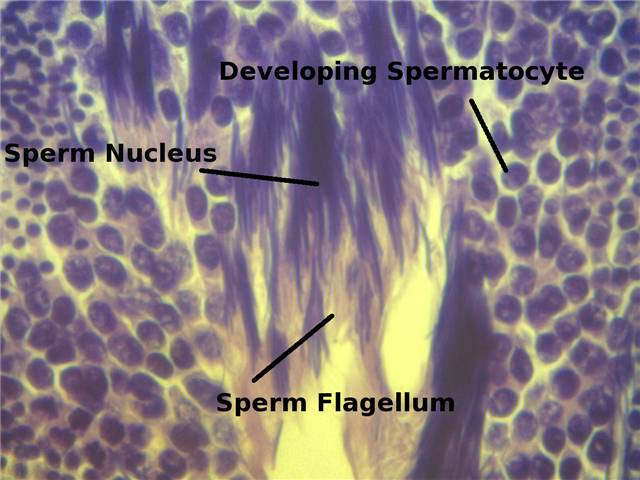Overview
Brief Summary
Distribution
Physical Description
Size
Identification Resources
Ecology
Local Distribution and Habitats
Life History & Behaviour
Behaviour
Reproduction and Development
Evolution & Systematics
Systematics or Phylogenetics
Morphology and Physiology
External Morphology
Internal Anatomy
Conservation
Trends and Threats
References & More Information
Bibliographies
Search the Web
Names & Taxonomy
Synonyms | Reproduction and Development
Latirus polygonus is a member of the Prosobranchs, which are known to be gonochoristic (Ruppert et al. 2004). This means that they are not hermaphroditic, and individuals express only one sex throughout their life. Gonads are located in the spirals of the visceral mass, with gametes delivered to the mantle cavity via the genital duct. The genital duct in gastropods are a specialized structure derived from the gonoduct, and only recent gastropods possess them. In early gastropods, gonads were in a coelomic cavity and excreted through a modified metanephridium, which is the gonoduct. The genital ducts in gastropods are derived from a range of three sources, which can be used to obtain information on phylogeny and evolutionary pathways.
Image 1 shows the stained slide of a sectioned gonad (male) of L. polygonus, observed under a microscope. The round cells on the outer rims of the image are spermatocytes (male gametocytes) in their process of developing into a sperm. The bundles of long, feathery cells located in the center of the image are the developed sperms.The dark stained region is the sperm nucleus, displaying the elongated shape characteristic to mollusc sperms. In fact, as shown from the study done by Sakker (1984), sperm characteristics can be used to obtain information on phylogeny and evolution. Hence, further studies on the sperm of the L. polygonus may lead to interesting findings regarding their phylogeny as well. The lightly stained feathery region extending from the sperm nucleus is the sperm flagellum.
 Fertilization occurs through internal copulation in these species. Neogastropods (L. polygonus is a member of this group) have a hard, protein based egg case which have characteristic shapes for each species. Primary development takes place inside these egg cases, and juveniles emerge from them directly. This indicates that these species lack a free-swimming planktonic larval stage. Fertilization occurs through internal copulation in these species. Neogastropods (L. polygonus is a member of this group) have a hard, protein based egg case which have characteristic shapes for each species. Primary development takes place inside these egg cases, and juveniles emerge from them directly. This indicates that these species lack a free-swimming planktonic larval stage.
Image 1. Microscopical photo of the male gonad of Latirus polygonus. |
|